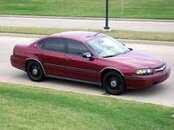Wookie
Proud to be a Chaos Muppet
Staff member
ScubaBoard Business Sponsor
ScubaBoard Supporter
Scuba Instructor
I would assume that anything that directs the force of the explosion up is going to make the operator's (and bystander's) day significantly better. In the second example, It was a piece of "reinforced PVC pipe". Now, I don't know what reinforced PVC pipe is, but I want some. Looks to me like it doesn't take much of a hint to make filling safe, a suggestion of "blow up not out" seems to do the trick, although I am basing that on a single incident.Wookie, thanks for the info. I am very surprised that the 8" reinforced concrete tank came apart, but I take your meaning of hydraulic pressure.
In the second example I guess the main reason that the SS tank did not fail was the significant reinforcement via the internally welded bars. So is it the combination of water and reinforced SS, or would just a reinforced SS tank be more effective.
But I know a little about the Mako fill station discussed earlier. They don't work by containing the blast, they work by directing the blast up not out, and by keeping the shrapnel from getting loose.




